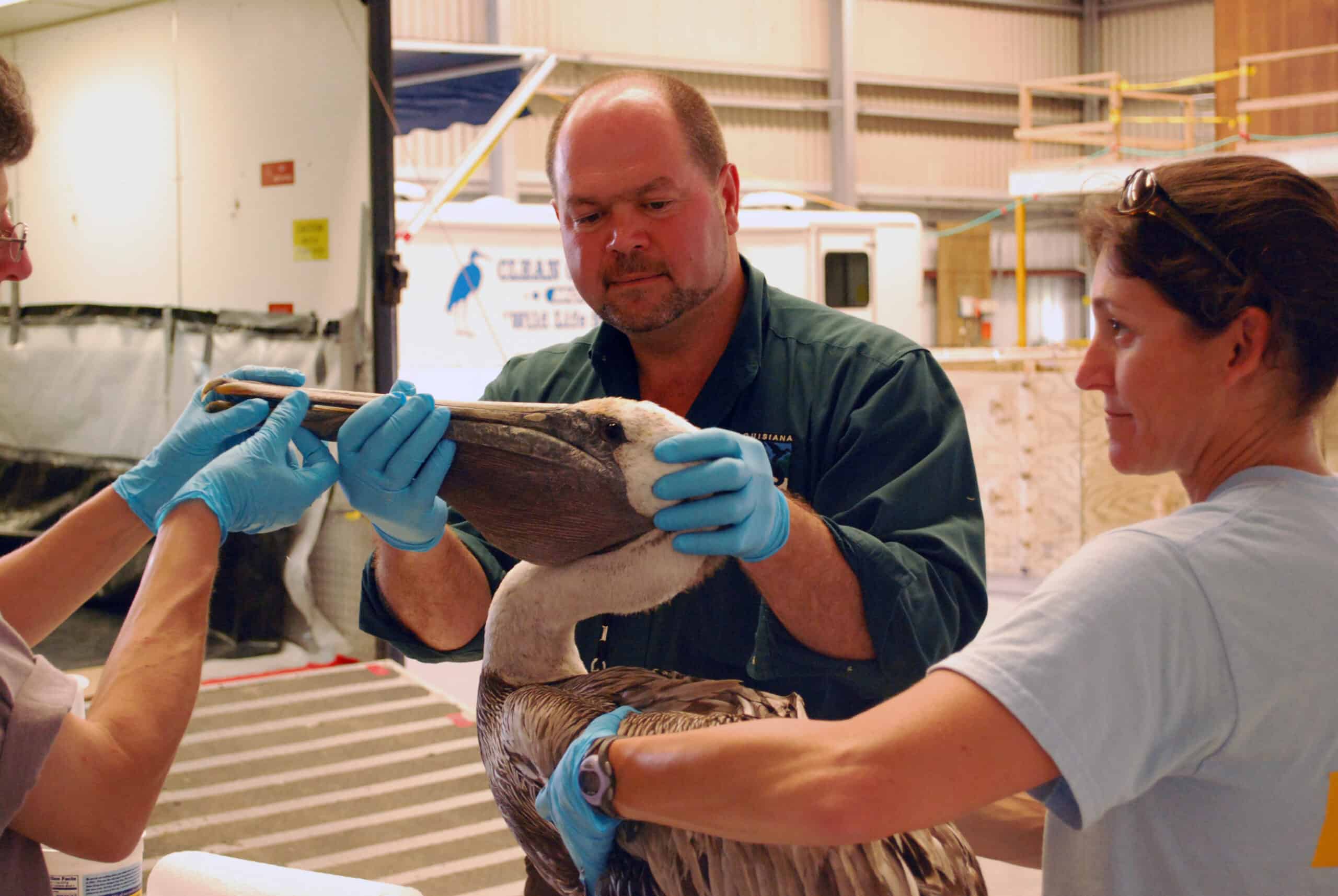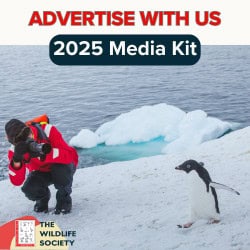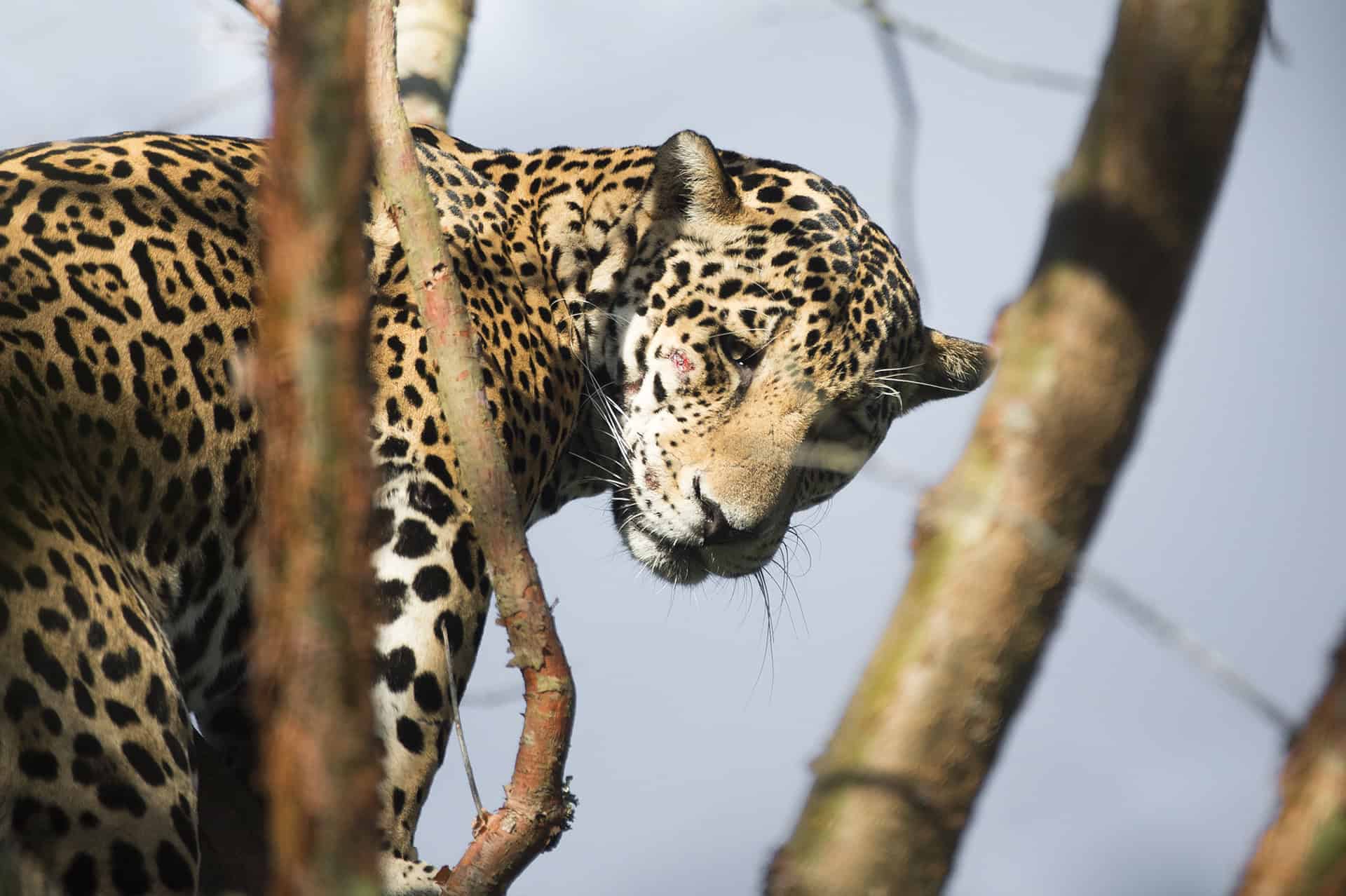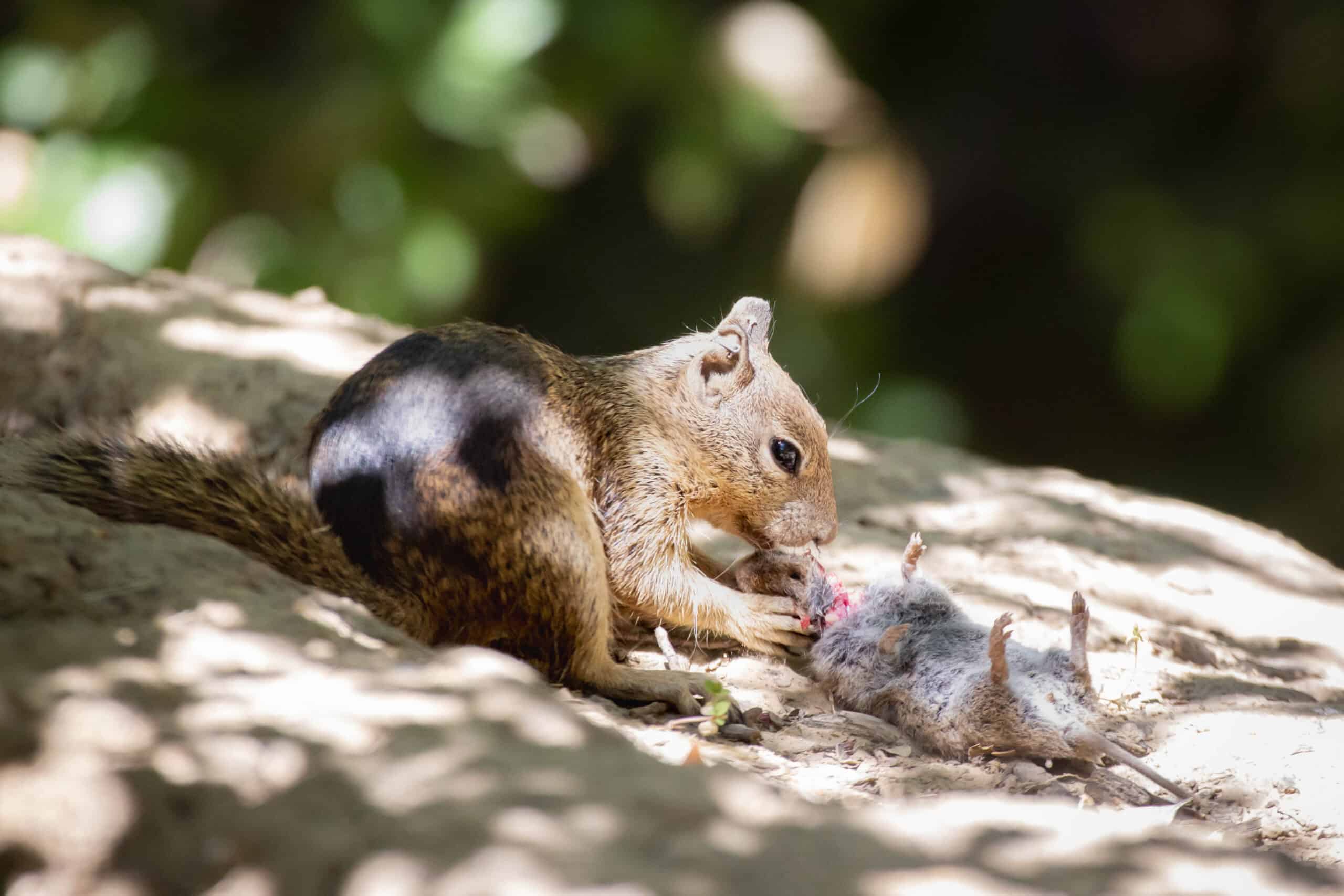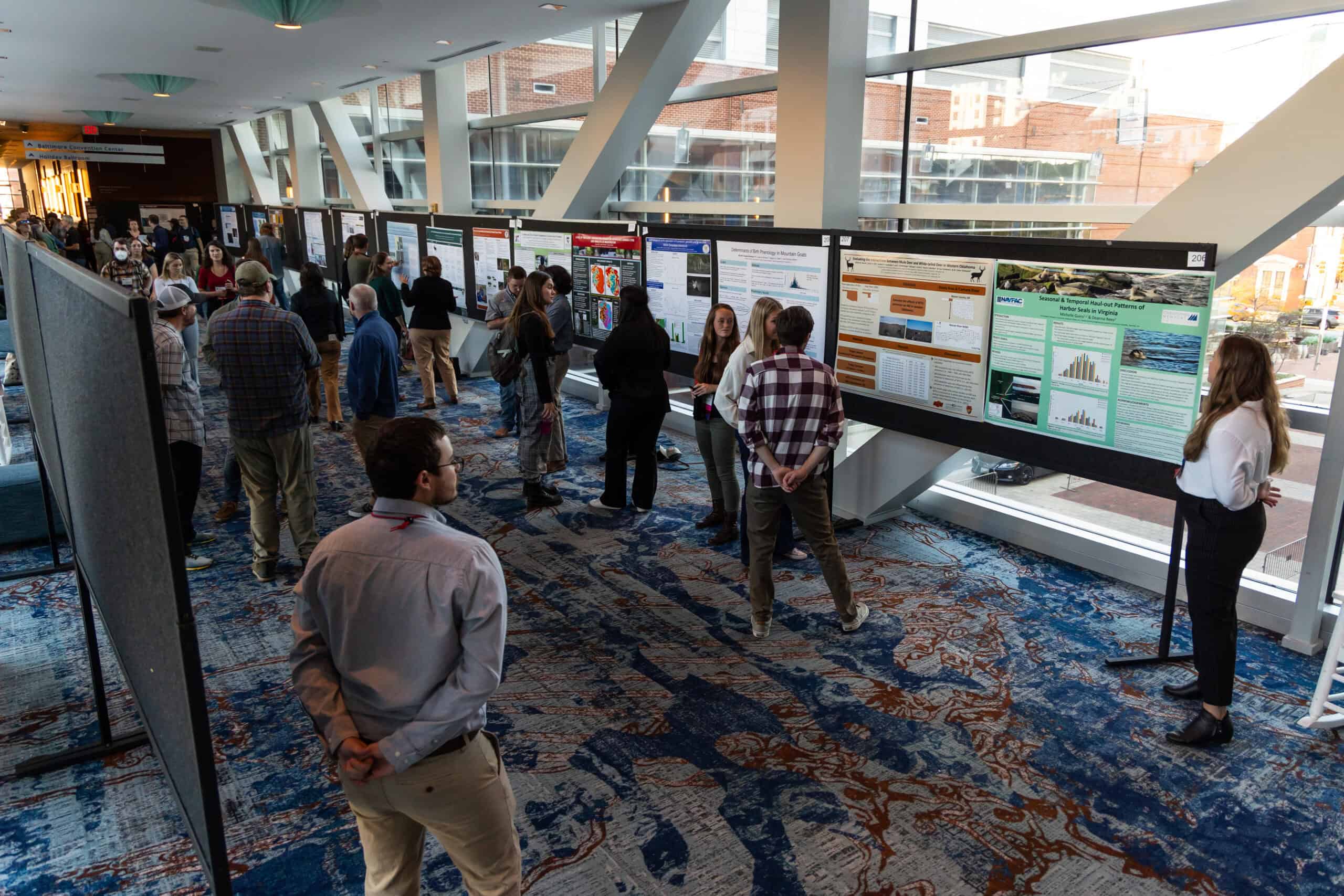Share this article
Q&A: Pairing two models to benefit wildlife
Can the longstanding North American Model and the emerging One Health framework work together?
In the U.S. and Canada, wildlife managers look to the North American Model of Wildlife Conservation to guide their efforts, but the concept, which holds that wildlife should be managed as a public trust, hasn’t been a big part of wildlife health field.
Robin Radcliffe, an associate professor at Cornell University, and his colleague David Jessup, with the University of California at Davis School of Veterinary Medicine, thought that should change.
“One of the things we realized is that our profession was not educated or informed about the North American Model,” Radcliffe said.
In an article published in the Journal of Zoo and Wildlife Medicine, they looked at ways two different models could work together—wildlife managers’ North American Model and the One Health concept espoused by wildlife health professionals, which views wildlife, human and ecosystem health together.
For our latest Q&A, The Wildlife Society connected with Radcliffe and Jessup to discuss the interconnection between these two approaches. Their responses have been edited for brevity.
What motivated you to write a paper about the connection between One Health and the North American Model of Conservation?
Radcliffe: There’s a huge gap in knowledge in our community. We tend to be so focused on diseases and managing health that we forget that this is part of a much bigger picture that really should be understood by wildlife veterinarians.
We wanted to educate our profession about the North American Model. You really had to go outside the veterinary or wildlife health literature to know anything about the model. That was a concern because we are trying to train veterinarians who work closely with wildlife biologists and wildlife managers to understand how wildlife is managed in North America.
In our day and age, there are fewer and fewer folks who actually get out and practice traditions like hunting and fishing. Without those kinds of grounding life experiences, I think people—including wildlife veterinarians—may not be in a position to make good decisions about wildlife health or support wildlife managers and wildlife biologists in their work.
“In our day and age, there are fewer and fewer folks who actually get out and practice traditions like hunting and fishing. Without those kinds of grounding life experiences, I think people—including wildlife veterinarians—may not be in a position to make good decisions about wildlife health or support wildlife managers and wildlife biologists in their work.”
Robin Radcliffe
Jessup: When I was hired by the California Department of Fish and Game as its first veterinarian in 1977, there were only five other vets working for state or federal wildlife agencies in the U.S. Now there are hundreds, but most do not come out of their basic degree programs with much training in wildlife management or a familiarity with basic guiding concepts like the North American Model. Bridging that gap can help wildlife agencies and the animals and ecosystems they steward and help wildlife vets do a better job meeting goals and expectations.
What are some examples of wildlife health being integral to the model?
Radcliffe: I think wildlife health has been important and can contribute to management. For example, in our article, we highlight black-footed ferrets and how two diseases—canine distemper and sylvatic plague—contributed to precipitous declines in both black-footed ferrets and their prey. With really good science and working together with managers and biologists, the U.S. Fish Wildlife Service recovery teams together with other stakeholders were able to successfully vaccinate and reintroduce animals back into the wild, which is a great example how health can be intricately connected to a high-profile management recovery program.
One of Aldo Leopold’s writings in A Sand County Almanac that really stuck with me over the years is that “the key to intelligent tinkering is keeping all the parts.” But I think if Leopold were around today, he would go further than that. He would say, not only do we need to keep all the parts. We need to understand them, how they interact and what role they play. I think this kind of understanding is essential for wildlife health. If we’ve learned anything from the last decade, COVID included, it’s that we do not live separate from nature. We are interconnected with planet Earth, and we have the power to tip the balance of community structure and its organisms, including those that cause disease.
Jessup: Keeping wildlife wild, in more or less intact ecosystems, at densities that are sustainable, generally optimizes wildlife health and wildlife management. But in some places with some species, we see wildlife being concentrated, fed like livestock, maybe even mixed with them, and this generally leads to bad outcomes—something incompatible with both the Model and One Health principles. Healthy wildlife populations are generally respected and admired by people, where obviously ill animals that may pose a threat to livestock, domestic pets or people often are not. Ensuring that people admire and respect wildlife will help ensure social, political and financial support for them.
“Ensuring that people admire and respect wildlife will help ensure social, political and financial support for them.”
David Jessup
What are some examples of failures of not considering wildlife health?
Radcliffe: Some of the diseases that we’re trying to manage here in North America are very difficult, time-consuming and expensive to manage, like, for example, chronic wasting disease.
If we followed the tenets of the North American Model to the tee, like it says, we would not probably have a significant problem with CWD today, because it’s spread is largely because of the way deer and other cervids are managed and moved around and raised in captivity.
The model specifically states that all markets for game are eliminated. Well, the markets for game have not been eliminated. I’m not talking about black markets for ivory and rhino horn or bush meat trade. I’m talking about people raising white-tailed deer, red deer or elk for profit. They raised them for their velvet, they raised them for their meat, and other reasons. Those market-driven uses of wildlife are definitely contributing to disease. So there’s a great example where the model really gave us foresight, we didn’t follow it and we’re dealing with the consequences.
Jessup: Managing deer, elk and to a lesser extent bison in confined and degraded areas has led to outbreaks of TB and chronic wasting disease that have then spread to wild animals outside the premises. In most cases, once a persistent disease gets into free-ranging wildlife, it is nearly impossible to eradicate. In the late 1980s and early 1990s, as game ranching and behind-wire shooting industries grew, many private individuals took it upon themselves to relocate wild pigs into hunted areas to add another species they could utilize. This resulted in a doubling of the area of the U.S. with wild pig populations in about a decade. Now, with African swine fever, a very deadly, persistent and highly infectious virus, having devastated wild boar populations in Europe and domestic swine industries in China and Southeast Asia, it has spread to Haiti and the Dominican Republic. If it gets a foothold on the North American mainland it will cost billions of dollars to respond and try to manage it, and eradication may prove impossible.
As the Model changes with society, what will incorporating the One Health approach look like?
Radcliffe: The foundation of Leopold’s land ethic was that people cared for and had faith in how we care for wildlife and wild places. I think the model is going to have to change as our society changes. I see examples of where it is changing, and there are examples where the model is falling behind.
“The foundation of Leopold’s land ethic was that people cared for and had faith in how we care for wildlife and wild places. I think the model is going to have to change as our society changes. I see examples of where it is changing, and there are examples where the model is falling behind.”
Robin Radcliffe
I think from a wildlife health perspective, the health part of it is increasingly important because people are finally beginning to understand and value how our own health is so intertwined with animals, people and the environment.
I think there are so many more opportunities now for wildlife veterinarians and health practitioners to work closely with wildlife biologists and wildlife managers to ensure that the faith and the trust that the North American Model has so diligently provided to our natural resource management philosophy remains in place and can even grow to be strong and vigorous, regardless of what the future holds.
Things are changing, and the model must keep up with that, but that foundation of a public trust—the idea that our natural resources belong in common to the people, have value, and are managed in trust by the government—is fundamental to the model going forward. We believe the model must evolve to include wildlife health more proactively.
How can wildlife veterinarians use the North American Model in their work?
Radcliffe: I think it first starts with educating wildlife veterinarians about the North American Model and why it’s important. Then, it’s about how to make use of it and make it part of your everyday practice. I feel like as a wildlife veterinarian, the model gives me skills I can use in my everyday life.
We proposed an addendum to the model: When we take care of wildlife, wildlife takes care of us. That’s the heart of what the North America Model is all about. I think having this discussion is timely, and I think it’s an opportunity to build even stronger bridges between wildlife health and the wildlife management community. Relationships in the past may have been challenging, but there are so many opportunities with this new field of One Heath to build bridges that stand to benefit both society and the North American Model. What a great opportunity before us!
Jessup: When wildlife veterinarians identify unhealthy situations or management practices, it will help them make their case for change to their agencies if they can couch some of their recommendations as being in line with the North American Model. And conversely, when they interact with agriculture veterinarians and the public, being able to tell them that basic wildlife management principles are supportive of One Health, and that benefits domestic animal and human health, should increase support for compatible agency actions.
Header Image: Wildlife veterinarian James LaCour examines a brown pelican. Credit: Louisiana GOSHEP



